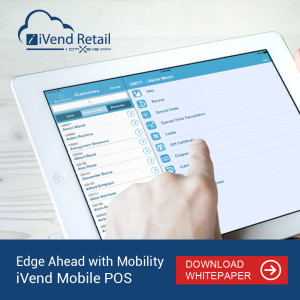
Mobile, mobile, mobile. It’s dominated retail discussions over the past 12 months, yet knowledge of how consumers use this technology – and how businesses should be incorporating it into their strategies – still feels as though it’s in its infancy. If anything, shoppers are ahead of the curve, quite frequently using their own devices in the store to research products or check prices. However, all that is set to change. According to a BRP special report into mobile technology, the number of retailers using mobile Point of Sale (mPOS) will increase by 300% over the next two years. So what does this mean for the industry? Well firstly, it’s going to shape consumer expectations. As mentioned, there is already a huge appetite for shoppers using their own devices as part of the journey to purchase, and these consumers will become more accustomed to relying on in-store technology as its adoption increases. While there are a few forward-thinking retailers pushing the boundaries by using mPOS for flexible customer service and queue busting, the majority of customers still expected to make transactions via a traditional, fixed Point of Sale. Mobile POS gives retailers the capacity to redefine in-store customer service, offering shoppers added value options such as:
- Real-time stock availability updates, by linking to inventory data
- Advice on different colours and styles, using online catalogues
- Recommended accessories or accompaniments, again using catalogue information
- Ability to order or reserve from anywhere in the fulfilment network, integrating operational data across the business
- Transactions anywhere in the store, by connecting to an online payments gateway
Secondly, the more retailers incorporate mPOS into their store strategies, the more competitive it will become as a  Edge_Ahead_with_mobility customer service tool. This means ‘making do’ with existing equipment will not suffice – retailers will need to be at the forefront of their game when it comes to both hardware and the supporting solution, in order to innovate experiences as shopper expectations increase. In order to stay ahead of the competition, therefore, retail businesses need to future-proof their mobile engagement strategy. This means choosing a flexible, scalable mobile POS management system that can add new functionality without slowing down day-to-day interactions. The quickest, most painless way to do this is to invest in a cloud-based solution. By moving deployment and maintenance of technology infrastructure into the cloud, retailers can upgrade or roll out applications to any device within their network remotely, minimising disruption to trading.
Edge_Ahead_with_mobility customer service tool. This means ‘making do’ with existing equipment will not suffice – retailers will need to be at the forefront of their game when it comes to both hardware and the supporting solution, in order to innovate experiences as shopper expectations increase. In order to stay ahead of the competition, therefore, retail businesses need to future-proof their mobile engagement strategy. This means choosing a flexible, scalable mobile POS management system that can add new functionality without slowing down day-to-day interactions. The quickest, most painless way to do this is to invest in a cloud-based solution. By moving deployment and maintenance of technology infrastructure into the cloud, retailers can upgrade or roll out applications to any device within their network remotely, minimising disruption to trading.
Not only that, but moving to the cloud lifts the boundaries applied by on-site solutions. By outsourcing their mPOS management to an expert third party, retailers remove restrictions imposed by store networks, data storage and operational resources. And should the time come when front-end hardware isn’t meeting customer needs, they can easily implement new technology that plugs straight into the cloud, drawing down existing data and capabilities as soon as the upgraded devices are connected.






Leave a Reply